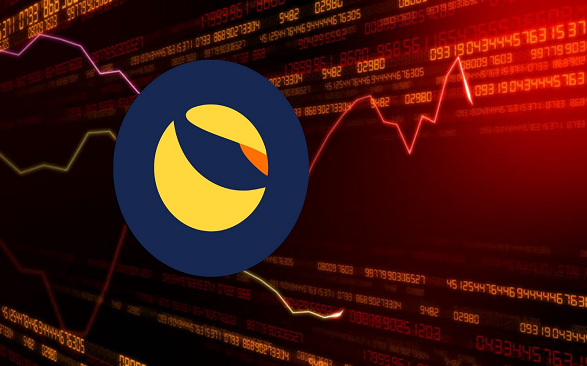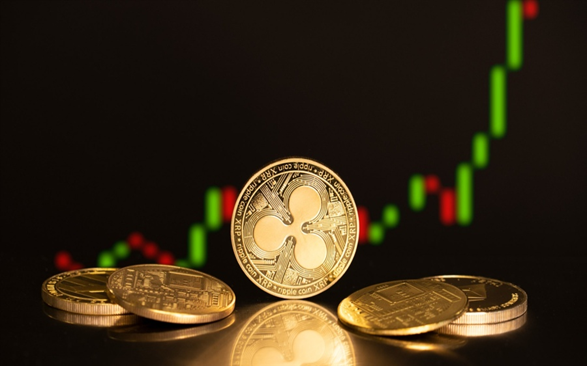The Terra Luna Classic (LUNC) community has been grappling with difficulties following the 2022 market turmoil, which resulted in a staggering $30 billion loss within a week. Despite attempts to rebrand and revamp their offerings, the Terra Luna ecosystem, including its UST logarithmic stablecoin, has failed to bounce back.
In a significant development, Terraform Labs, has announced that it would be shutting down its operations. This move comes after the company reached a $4.47 billion settlement with the US Securities and Exchange Commission (SEC) related to the collapse of TerraUSD (UST) in 2022.
This has caused deep concerns among investors and crypto enthusiasts alike. Hence, the need to analyze what went wrong, its effects on Terra Luna’s price and investors, so as to help investors make informed decisions
Read Also: LUNA from the Moon to Ground Zero. Will the price rise again?
Rise of Terraform Labs and Terra Luna
Terraform Labs, founded in 2018 by Do Kwon and Daniel Shin, was a blockchain development company that aimed to build a decentralized and scalable ecosystem. Its flagship project, Terra Luna (LUNA), was launched in 2019 as the native cryptocurrency of the Terra blockchain.
LUNA was designed for governance, staking, and transactions on the network, with a focus on decentralization, openness, and fast, low-cost transactions.
Additionally, LUNA played a crucial role in stabilizing the value of Terra USD (UST), an algorithmic stablecoin pegged to the US dollar. Terraform Labs and Terra Luna gained significant attention in the cryptocurrency space before the company’s collapse in 2022.
Concerns have been raised about Do Kwon’s leadership, particularly regarding his handling of customer protection.
Luna, the native token of Terra, fueled the platform’s stablecoins and governance. In 2021, Luna’s price surged as investors bet on Terra’s decentralized finance (DeFi) ecosystem to disrupt traditional finance. Top venture capital firms backed Terraform Labs’ vision, and by January 2022, UST’s market capitalization reached $10 billion, becoming the third-largest stablecoin. Luna’s price peaked at $116 that month. Terra aggressively marketed itself, sponsoring prominent sports teams, and fostered a devoted community.
Its groundbreaking innovations have captured significant attention in the decentralized finance (DeFi) space, showcasing its potential to shape the future of financial systems.
Read Also: What is really behind Solana’s emergence as the leading blockchain ecosystem in 2024?
Terra’s stability mechanism maintained the value of its stablecoins, addressing volatility issues. Its smart contract capabilities enabled decentralized applications and financial tools, enabling a dynamic ecosystem. Its cross-chain with other blockchains increases liquidity and collaboration, positioning it as a bridge between ecosystems. Decentralized governance involves the community in decision-making, ensuring a democratic and transparent structure. Prioritizing security, Terra utilized robust measures to protect its network, ensuring a reliable infrastructure for long-term success.
However, beneath the hype, concerns arose about the sustainability of algorithmic stablecoins and excessive speculation driving Luna’s price, hinting at underlying vulnerabilities in the ecosystem.
Read Also: BNB hits new all-time high of $710: Prospects for investors and traders
What Went Wrong
Algorithmic stablecoins like UST use complex incentives to maintain their value, unlike stablecoins backed by fiat currency. When UST’s price drops below $1, traders can exchange it for $1 worth of Luna, reducing UST’s supply and boosting its price. Conversely, when UST’s price exceeds $1, users can trade $1 of Luna for newly minted UST, increasing supply and decreasing price. However, this mechanism relies on Luna’s price remaining high, which was severely tested during the market turmoil of 2022, threatening the fragile balance.
This caused UST to lose its dollar peg. As investors rushed to redeem UST for Luna, the circulating supply of Luna surged, leading to a catastrophic 99% plunge in its value. This collapse of Luna’s collateral value triggered a vicious cycle of selling pressure, rendering UST’s peg untenable. Both Luna and UST plummeted to near worthlessness, wiping out a staggering $40 billion in market capitalization in just seven days. The devastating outcome left the Terra community in financial shambles.
Terra’s leadership also failed to provide clear and timely information, leaving investors and users in the dark. This act eroded trust and escalated the crisis. Their rapid growth can be seen as overexpansion because they had insufficient capacity to handle the risks they took.
Regulatory issues and legal challenges also posed a great challenge to them.
Read Also: Notcoin: SWOT Analysis for Investors, Holders, and Users
Impact on Price and Investors
(Analysis of Terra Luna’s price drop and market capitalization decline by my mentor)
The Luna-Terra crisis has had a devastating impact on investor portfolios, with many facing significant losses, and some losing their entire investment. The collapse of the Terra ecosystem also led to a broader market downturn, affecting other cryptocurrency investments.
The crisis has also severely affected investor confidence and sentiment, leading to increased skepticism. Investor trust in algorithmic stablecoins and other cryptocurrency projects has been shaken, making it necessary for projects to prioritize transparency and robustness to regain investor faith.
Despite the risks, the crisis also presents opportunities for investors. They may be able to buy high-quality cryptocurrency projects at discounted prices, potentially leading to long-term gains. Also, investors may shift their focus to more robust and transparent projects, driving innovation and growth in the industry.
Read Also: Coinbase: Impact of the U.S. SEC’s Legal Action; XRP Case
Lessons learned from the collapse of Terraform Labs
The collapse of Terraform Labs serves as a reminder of the importance of prudent investing and risk management. Key lessons learned include the need for thorough research and due diligence, diversification of investments, and regular portfolio rebalancing.
Moreover, investors must be cautious of unsustainably high yields and projects with lack of transparency and regulatory compliance.
For those who have suffered investment losses, recovery strategies include reassessing investment goals and risk tolerance, diversifying portfolios to minimize exposure to any one asset, and considering dollar-cost averaging to gradually re-enter the market. Investors may also consider seeking professional financial advice, and adopting a long-term perspective.
Read Also: How do I manage investment risks in the crypto market?
The future of Terra Luna remains uncertain, but there are possibilities around it. Despite the devastating collapse, there is a chance for rebranding, potentially under a new development team or community takeover. This could bring fresh perspectives and innovative ideas to the table, revitalizing the ecosystem. However, significant challenges and obstacles must be overcome, including rebuilding trust, addressing regulatory issues, and resolving outstanding debts and legal liabilities.
If successfully revived, the Terra ecosystem presents opportunities for growth and innovation. The community could focus on developing robust and transparent protocols, prioritizing sustainability and scalability. New use cases and applications could emerge, leveraging the ecosystem’s remaining value and potential. Investors may find opportunities in the rebirth of Terra Luna, but cautious approach and thorough research are essential. The future of Terra Luna hangs in the balance, but with determination and innovation, it may yet rise from the ashes.
Credit: Solomon Victor is a Technical Analyst who is also knowledgeable about various aspects of blockchain and cryptocurrency.
Discover more from Crypto Asset Buyer
Subscribe to get the latest posts sent to your email.




